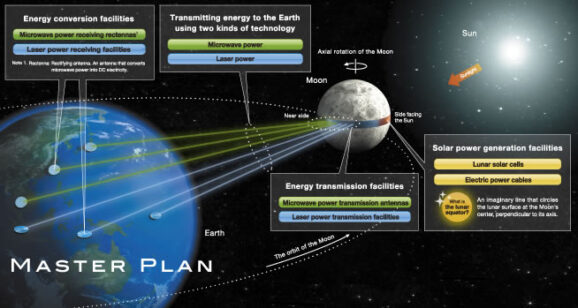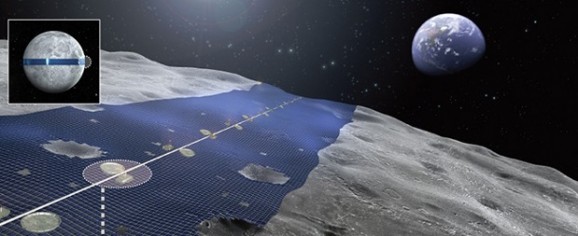A Plan Make The Moon A Hub For Solar Power By Putting A Ring Around It
This article is more than 2 years old

America may not be sending people to the moon anytime soon, but recently NASA has been interested in how we can use the moon to advance the scientific and space frontiers. From growing plants to using the moon as a way to destroy threatening asteroids to establishing a national park there, scientists seem to be realizing that there’s more to be done on Earth’s favorite space rock than simply sticking a flag in it. The latest idea for the moon, proposed by Japan’s Shimizu Corporation, involves turning it into a major hub for solar power by putting something called a Luna Ring around it. Would that make us married to the moon?
The moon is an advantageous venue for harvesting solar power, given that it’s constantly sunbathing. Solar-powered instruments, such as some used by Apollo astronauts and China’s recently launched Yutu moon rover have successfully harnessed the endless sunlight available to the moon. So why not increase the scale? Shimizu Corporation’s proposal involves wrapping a 250-mile-wide ring of solar panels around the moon’s equator and then beaming the solar power back to mother Earth.

Let’s look at the upsides of this plan first—it could generated an estimated 13,000 terrawatts of constant power. That’ll keep a few lights on, especially given that the average total summer electricity generation in the US is just over 1,000 gigawatts, or 1 terrawatt. So we’re talking about a nearly unlimited amount of green energy here, which is one of those incredibly lofty and seemingly impossible goals. Shimizu says that the solar energy could be directed through laser and microwave transmitters on the side of the moon that faces Earth, which would allow receiving stations around the world to harness the electricity during Earth’s rotation.
The downside? How the hell do we build this 6,800-mile ring? We don’t currently have all the robotic technologies necessary to complete such a massive lunar construction project. We’d need robots that could do all kinds of tasks on the moon’s surface, as well as be able to perform tasks communicated remotely by humans on Earth. And what about ownership? What would the countries of the world think about this Japanese corporation undertaking such a project? Some may very well protest—especially those whose GDP depends on oil. Would this solar energy presumably be available to anyone and everyone, or only to companies that invest in the project? What would the cost be, both of buying access to that energy and in constructing the Luna Ring in the first place?
Luckily, Shimizu has built in time to consider these questions—the target start date isn’t until 2035. Certainly the biggest engineering project ever warrants pretty careful and thorough planning. But until then, why not praise the merits of such an idea? This is about as big as ideas get, and its motivation is in the right place. Plus, think about all the trippy photos we’ll get of the moon looking a bit like Saturn!











